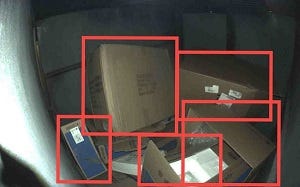Compology Expands Contamination ID Capabilities
The company announced its dumpster cameras can now identify garbage bags, tanglers, propane tanks and more.

Compology has improved its container content and contamination identification capabilities to include an expanded list of identifiable items such as garbage bags, tanglers (garden hoses, holiday lights, packing straps, etc.), Styrofoam, propane tanks, bulky items (pallets, furniture, tires, etc.), e-waste, wood scraps, uncollapsed cardboard, metals, people and more.
“We were overwhelmed by the positive response to and rapid adoption of our Contamination Score AI technology that allows us to identify specific contaminants in recycling, waste and organics streams,” said Compology CEO Jason Gates in a statement. “Our customers have already been able to drastically reduce contamination and increase revenue from their recycling operations as a result, so we’ve continued to invest in cutting-edge technology to greatly expand our content identification capabilities to a list of high-priority contaminants that will continuously grow as we learn the specific needs of future customers.”
Compology can now identify items such as pallets, furniture, black bags and tanglers (packing straps, hoses, stringed lights, etc.) to help commercial haulers clean up the recycling stream, bill for contamination and avoid inefficient materials recovery facility operations and safety issues.

Compology’s artificial intelligence contamination identification technology, CScore, not only automatically identifies various contaminants but also provides a standardized measure of contamination.
Waste Management Area Manager Jason Rose confirmed at WasteExpo 2019 that in the first five months working with Compology they’ve seen “... a 60 percent reduction in contamination.”
The ability to identify contaminants allows waste haulers to remotely monitor and provide timely, targeted alerts and coaching to generators to remove contaminants prior to pickup, or instead, appropriately bill for contaminated hauls. Remote contamination monitoring ultimately allows haulers to not only avoid the cost of contamination but also track generator disposal habits and coach improvement over time.
“The majority of our customers choose to either clean [the contamination] up or have us pick it up and bill them appropriately, that’s about 95 percent. The other 5 percent have us pick it up as MSW [municipal solid waste], and we bill them appropriately,” said Rose in a statement. “In the end, it’s all about sustainable leadership. We’re very focused on using data, technology and innovation to work closely with our customers to really make recycling sustainable and cost effective for the long term.”
Compology can also identify contents such as uncollapsed boxes to inform waste generators of poor disposal habits that impact operational costs. Roll-off haulers can use Compology to identify items such as propane tanks to improve safety and items like tires to avoid contaminated pickups.

“For Compology, the ability to be responsive to our customers for new content identification requests is paramount,” said Chief Product Officer Ben Chehebar in a statement. “We want to accelerate our customers’ ability to operate efficiently and cost effectively, while educating their own customers on proper disposal habits.”
About the Author
You May Also Like


.png?width=300&auto=webp&quality=80&disable=upscale)